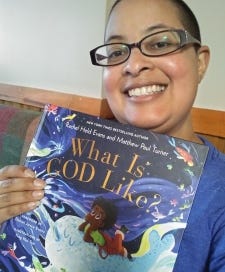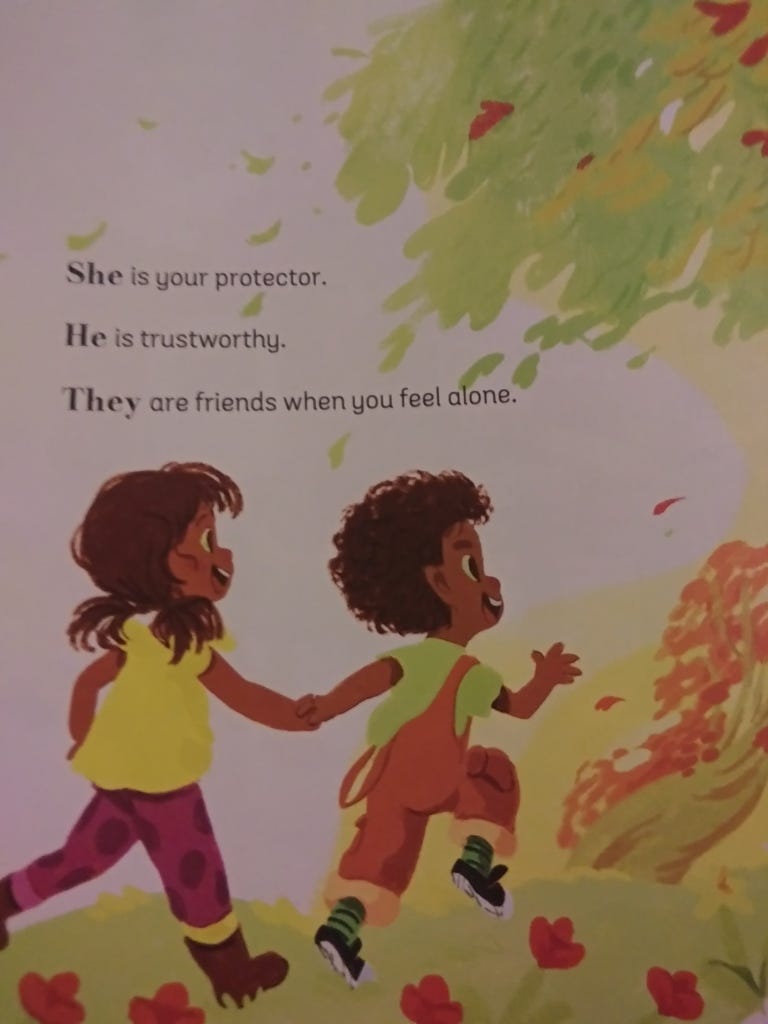"What Is God Like" Book Review
Honestly, I never paid much attention to children’s Christian books until I started hanging out with my friend’s kiddos this past year and I wanted to buy them some books. And not surprisingly, conservative/Evangelical Christianity has quite an extensive list of books geared towards children. I wanted to buy my friend’s kiddos books that proclaimed a widely inclusive God and that showed the diversity of all God’s creation and how that diversity was good and God-ordained.
While I am willing to admit there are some decent conservative/Evangelical Christian children’s book that eschew some of Evangelical Christianity’s more problematic theologies, they still typically avoid celebrating the diversity of God’s creation. I wanted a book that emphasizes how people of all shapes and sizes, colors and ethnicities, physical abilities, and gender identity are beloved by God.
So, when I heard that Rachel Held Evans had been working on a children’s book before her untimely death I was excited and had high expectations. And the book did not disappoint. The book, What is God Like?, written in conjunction with Matthew Paul Turner and illustrated by Ying Hui Tan is a beautiful book that describes the radical love of God and that also joyfully celebrates humanity.
First, the illustrations are stunning. Bright and colorful, the pages bring to life the wonders of creation. From the beauty of the natural world to the ways in which God expresses Godself in all of humanity, the illustrations do a great job of bringing to life RHE’s and Turner’s words. I also want to emphasize how the illustrations celebrates humanity in its varied expressions. Too many Christian children’s book continue to center the experiences of white cisgender people. However, What is God Like? seeks to highlight how people of all races and ethnicities and physical abilities are beloved children of God.
I do want to quickly address one criticism I have seen of the book: that having a Black child as a main character, while the authors are white and the illustrator is also non-Black, is exploitative and harmful. On the one hand, I sympathize with that view point. And I think it is something that white/nonBlack authors and illustrators need to take into consideration. Are they seeking to include a diversity in their works because they want to push back against the white supremacy inherent in the publishing industry or are they trying to exploit the need for diverse characters for their own selfish gains?
Too many institutions from publishing to academia to law enforcement to nonprofit work etc believe that ending racism is simply a matter of adding some Black and brown representation and moving on. Let me be clear: the Christian publishing world is still too overwhelming white and adding more books with diverse representations without adding more Black and brown authors and illustrators, will do nothing to solve the racism within the publishing industry and is simply another form of exploiting the bodies and experiences of Black and brown people.
On the other hand, I also believe it’s important to examine an author’s/illustrator’s body of work to help tease out whether they are truly committed to eradicating white supremacy or if they are simply exploiting calls for diverse characters while continuing to shut out Black and brown creators. From what I understand, Rachel Held Evans had a history of supporting and uplifting Black and brown creators and speaking out against racism. Likewise, Matthew Paul Turner and illustrator Ying Hui Tan both seem to make conscious decisions to repeatedly emphasize diversity in their work. So I believe all involved in creating What Is God Like? truly sought to create a book that acknowledges and celebrate all of God's beloved children.
Now, I want to focus on RHE’s and Turner’s words. I believe they do a great job in both conveying the compassion and love of God in language simple enough for young children to understand and yet rich enough to encompass glimpses of the divine. As an adult, who grew up in an Evangelical/Fundamentalist church, RHE’s and Turner’s description of God made my inner child feel safe and welcome. Not only because they explicitly emphasize characteristics of God that denote warmth, safety, and protection but also because they use feminine, masculine, they and non-gendered language for God.
Many Christian children’s book emphasizes God as “he.” Even when these books point out that God is above and beyond stereotypical notions of gender, God is still only referred to in male language. But What is God Like is careful to mainly use non-gendered language, but when gender is incorporated, God is described as encompassing and embodying the full spectrum of gender identity.
RHE and Turner focus on a God that loves and accepts all. This God delights in all of their children. This God provides comfort and safety. They present images of God that I so desperately needed as a child.
I look forward to reading this book with my friend’s kiddos and I know this is a book they will return to again and again.






